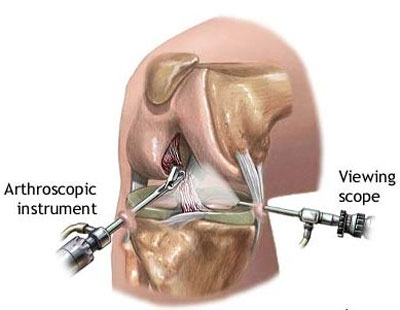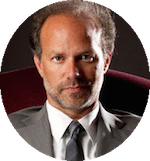136 East 57th Street Suite 1501
New York, NY 10022
Meniscus Surgery

Quicker Recovery to Work/Sports

Less Pain Without Narcotics

What is the Meniscus?
The meniscus is one of two small, “c” shaped pieces of cartilage that act as a cushion in the knee joint. They sit between the thigh bone (femur) and the tibia (shin bone), one on the outside (lateral meniscus) and one on the inside of the knee (medial meniscus). The main purpose of the meniscus is to help distribute the forces that the knee sees, and help stabilize the joint. A meniscus can tear during a forceful movement in the knee. Learn more about meniscus surgery in New York City with the leading orthopedic surgeon Dr. Ron Noy.
Meniscus Tears
Meniscus tears usually occur during movements that forcefully rotate the knee while bearing weight, such as in sports or running for a bus, but can also occur during stretches and yoga as well. The swelling is often not immediate, and can be mild. Depending upon the extent and pattern of the tear, symptoms can range from mild to severe pain (particularly when the knee is straightened), buckling (similar to a pebble in your shoe feeling), locking (the knee actually gets stuck and difficult to put weight on the leg – this is usually a “bucket handle tear”) and swelling. Severe pain is common when a fragment of the torn meniscus catches between the femur and tibia, and can lead to buckling of the knee. An injury to the meniscus can also cause an audible click or pop. If the meniscus injury is small, these symptoms may resolve with physical therapy or even without treatment, but larger injuries usually require surgery.



New York City Meniscus Surgery and Treatment
Surgery for meniscus tears includes partial meniscus removal (meniscectomy – only the torn part is removed, and this is the most common), meniscus repair (when possible, this is performed as the meniscus is there for a reason), or a meniscus transplant replacement (rare). The success rate of meniscectomy and meniscus repair are very high, and the return to full sports is the norm. Arthroscopic meniscus repair surgery is an elective procedure so it can be scheduled based upon the patient’s needs, but is best performed within two months after the injury as the chances of the torn tissue being repairable go down over time and then the only choice is to remove the torn tissue. Arthroscopic surgery is done by inserting small instruments and a small camera into the knee joint through two very small incisions.
The surgery is done under light general and local anesthesia and takes less than an hour. During meniscus repair surgery the torn section of meniscus is either removed (a partial meniscectomy) or the torn edges are sewn back together with special devices. The goal is to save as much of the original, normal meniscus cartilage as possible. Since the meniscus blood supply is located near the outer rim, repairs near the outer rim are more likely to heal successfully. Attempted repairs near the center do not heal (except in the very young) due to the lack of a blood supply in this area, and therefore meniscectomy is usually performed in this area. However, the success rate with this procedure remains extremely high as well.
Whether you are living in New York City or traveling to NYC for meniscus surgery we will help handle all arrangements for you from booking a hotel, scheduling a car service and setting up physical therapy.
Torn Meniscus Video
Recovery after Meniscus Surgery
Patients are typically able to leave the hospital after an hour in the recovery room, with the aid of a cane or crutches. Dr. Noy uses special techniques that allow most patients to have a relatively painless recovery and most patients do not use the narcotics prescribed to them. Most patients are allowed full weight bearing after surgery. A knee brace is only used if a repair was done to limit full motion for a few weeks, but meniscectomies do not require this. A special cold therapy machine is used after surgery to help reduce swelling and pain. Keeping the leg and knee elevated for the first few days to a week helps speed the healing process and decreases the full recovery time back to sports dramatically. Physical therapy is usually started after the post op visit although some patients use their trainer or do a program on their own. Full recovery is as early as 2-3 weeks for professional athletes, but usually takes 4-8 weeks for most patients. Regular daily activities though are usually accomplished by 1 week.
Book Appointment
Let Prestige Orthopaedics & Sports Medicine bring you back to full strength.
Meet Our Founder Dr. Ron Noy
The founding mission of Prestige Orthopaedics & Sports Medicine is to provide safer, more effective and quicker recoveries with less pain and unrivaled service
Stitching Technique for Meniscus Repair
Watch Dr. Noy explain the technique he developed to improve meniscus tears after surgery.
Patient Testimonials
Read why patients think Prestige Orthopaedics & Sports Medicine is the leading New York City Orthopaedics Specialist. Filter through reviews from all online sources.








